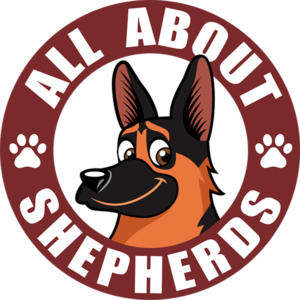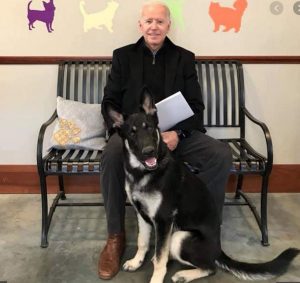Overview Canine massage has become very popular, and many day spas offer massage sessions for your fur kid at the same time you have your massage, but with different therapists, of course. Many veterinarians offer canine massage and many massage therapists are expanding their practice to encompass man’s best friend.
As you know from your own sessions, a massage provides a bonding experience between therapist and client. Why let someone else have that special time with your fur kid? Learn how to massage your dog yourself and build the unique relationship that you two share.
German Shepherd Dog Health Issues And Massage
German Shepherds and other large breed dogs can have health issues that smaller breeds don’t. Hip dysplasia and arthritis are common among larger breeds and can become debilitating, and for reasons not yet understood, larger breed dogs typically have a shorter lifespan than smaller breeds. Some of the largest breeds have a mere 5 to 8 year lifespan.
Massage may be able to help with that. Massage stimulates blood circulation in the body, whether human or canine. When blood flow is increased, cells receive more oxygen, the body is more energetic, and the organs function better. This is true for all species.
Massage also stimulates the function of the lymphatic system, which means that metabolic waste and toxic buildup from daily living will be flushed from your system and your body will be healthier. Massage helps eliminate emotional toxins as well; it’s difficult to harbor resentment and ill will toward anyone when your parasympathetic nervous system kicks in. Although your canine companion may not express resentment and ill will, our animals sometimes become stressed and/or unhappy due to events over which they have no control. Massage can help alleviate those feelings and restore your best friend’s mental and physical well being. It’s also a great way to bond with your dog and deepen your friendship.
Massage can also help alleviate the pain and soreness of the muscles and joints that commonly occur as large breed dogs grow older. It can help restore vitality and may help your best friend to live longer.
Do you want to learn how to massage your large breed dog? Read on for a tutorial and tips on giving your dog the best massage you can.
How To Massage A German Shepherd Dog
Your massage may include extras like hot stones or meditation, but your dog doesn’t need those things. Animals don’t, as a rule, meditate. Their association with their surrounding is on a more childlike basis; just as you wouldn’t expect your toddler to meditate, you shouldn’t expect that your dog will either. And just as you wouldn’t place hot rocks on your toddler, you shouldn’t place them on your dog either.
Preparing For The Massage
You’ll need a little preparation for massaging your dog. You need a quiet place that will provide the same tranquil atmosphere that your therapist provides for your massage. Allow about a half hour for the massage and make sure you’re not going to be interrupted by cell phones, kids, spouse, or anything else. Just as your therapist provides you with uninterrupted time, so you should provide your best friend uninterrupted time for his massage.
Place a rug or large towel on the surface he’ll be on and make sure you’re comfortable as well: You’ll be in this position for about 30 minutes so you need to be comfortable. You won’t need any oil, lotion, or essential oils unless you want cream for his pads. If you prefer aromatherapy, you can use lavender or any other calming oil, but make sure there are no contraindications for use on dogs. Some essential oils are toxic to pets.
Helpful Hints Before Starting The Massage
The most important factor in your dog’s massage is that he enjoys it. Remember that even though you may enjoy a deep tissue massage, he may not. Watch your dog’s responses carefully and you’ll soon know what he likes and what he doesn’t. If he growls, you know you have discovered a sore area or an injury. Stop pressure on that area immediately, move on to another area, and make a mental note to check that area after the massage session has ended.
Ideally, long before you start the massage, you’ll have brushed up on canine anatomy, which is radically different than human anatomy. Alternatively, there are websites that provide in-depth information on canine anatomy, as well as some that provide a more cursory overview. Amazon sells a reference book that details specific techniques for canine massage if you want to provide the absolute best massage possible for your dog.
The Actual Massage
Have your dog sit facing you and make sure you are both calm and relaxed. Start massaging your dog’s nose, using small, circular motions, and then work your way up to his head between his ears. Continue your circular massage strokes around behind his ears, around his eyes, and then back to his jaw. Be sure your strokes are gentle and slow. You can also lift his jowls to check the condition of his teeth during this time.
Next, work backward to the upper neck, across the shoulders, then to the chest area. If your dog wants to lie down, let him, but continue your massage. If he’s lying down, it doesn’t matter which side he lies on.
At this point, switch your small, circular motions to long, slow strokes down his side. Make sure you keep your strokes slow, and continue for five minutes or thereabouts. This encourages relaxation of both the muscles and the skeleton. Then work your way forward to his chest.
Once you have reached the chest, begin with the small circular motions and move toward one front leg. When you reach his joint, use both hands to massage and observe closely for any signs of pain or discomfort. If the area appears sensitive to your touch, then stop and just hold the joint in your hands with light pressure. Your hands will be very warm by this time and the heat will feel good on the ailing joint. Make a mental note to check this joint after the session ends and contact your veterinarian if necessary.
When you reach the foot, inspect it and remove any debris that may be stuck between his pads or toes. Massage his pads with a cream or lotion if you want, then move to the webbing between his toes. By this time, you dog may be asleep, but that’s okay.
Roll your dog on his back and scratch his belly while you inspect his underside for injuries, bites, or anything else that shouldn’t be there. Roll him onto his other side and repeat the process. When you have finished with his other side, massage on either side of his spine with the flat of your palm or fingers from his neck to the base of his tail. You can work down and back up the hind legs at this point, including the toes, pads, and webbing of the hind feet.
Added Benefits Of Canine Massage
Aside from the added health benefits of massaging your large breed dog, the massage builds a special bond between the two of you. It also accustoms your dog to being handled all over so when he goes to the vet, he’ll be more comfortable with their procedures.
A canine massage can help prolong your dog’s life and make him a happier dog as well. Therapeutic massage isn’t just for humans anymore!
Give Your Dog The Best….
Provide the best life you can for your best friend and give him a relaxing and therapeutic massage. It will help you also!




